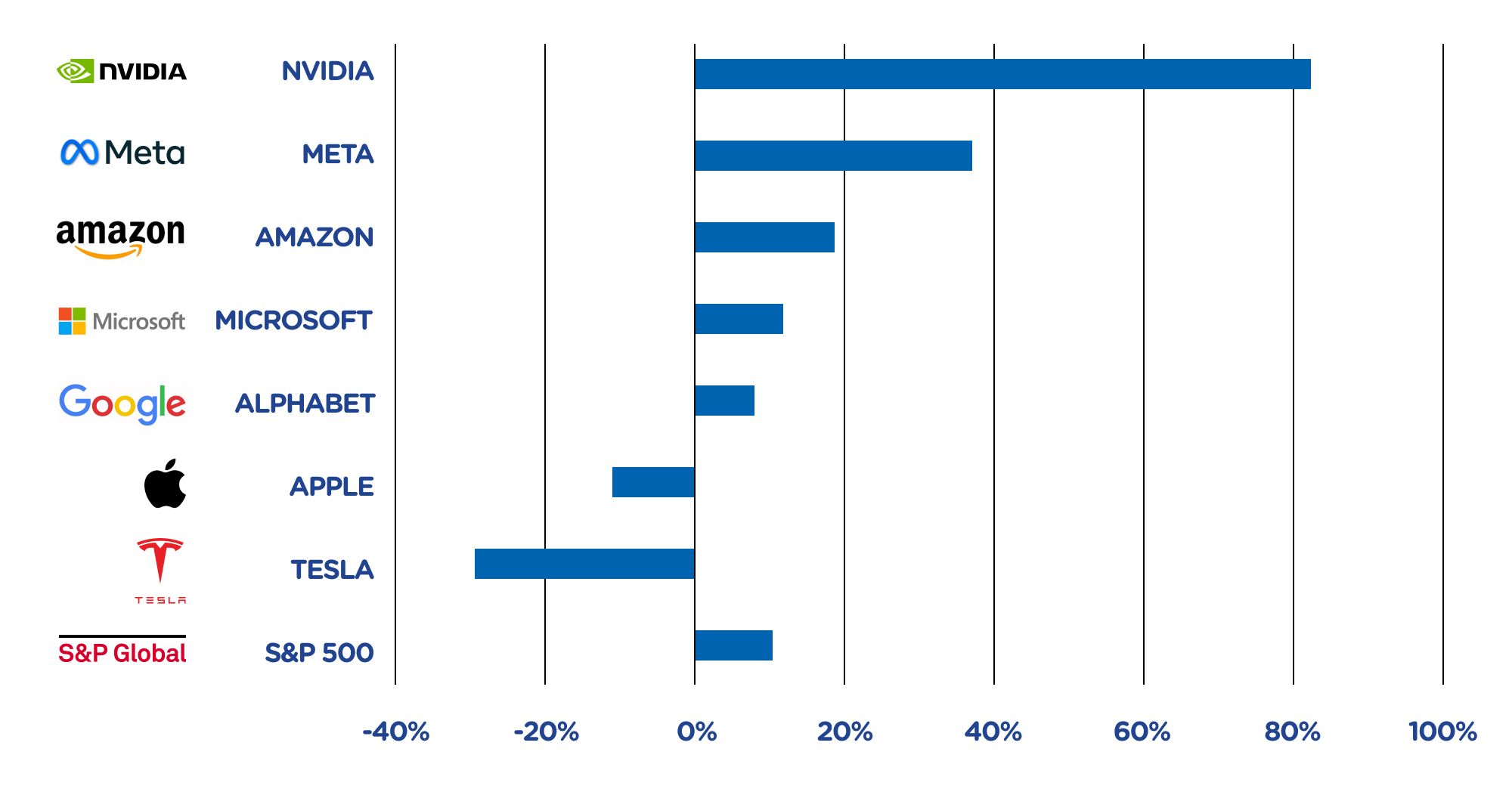Market update
Despite turmoil in the Middle East and Ukraine, the quarter was generally positive for markets, with both Australian and global shares repeating their performance from the previous quarter. While a majority of the “Magnificent Seven” – the name given to a small number of large technology companies – again posted large quarterly gains, we are also starting to see strong returns outside the tech sector.
The Magnificent Seven
March 2024 Quarterly performance vs S&P 500
Figure 1: performance of the “Magnificent Seven" technology companies over the quarter to 31 March 2024, compared to the S&P 500 shares index, which includes 500 of the largest publicly traded companies in the US and rose 11%
The main driver of these strong returns in share markets was the resilience in global economies, particularly in the United States, where unemployment rates remained low, real wages continued to grow, and corporate earnings were strong. Taken together, these indicators led investors to believe that the effects of the interest rate hikes seen over the past two years may not be as bad as first feared.
The Australian economy continued to grow modestly despite the impact on households of higher interest rates and higher cost-of-living pressures. Immigration (which added more workers to the labour pool, who also spent money) helped support the domestic economy, and low unemployment rates supported consumer spending.







